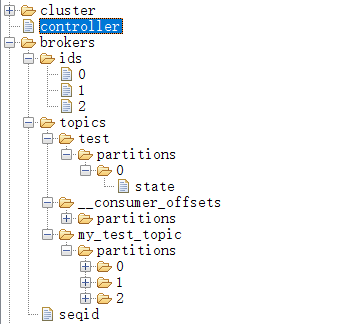SpringBoot2.0之整合Kafka
maven依赖:
<project xmlns="http://maven.apache.org/POM/4.0.0" xmlns:xsi="http://www.w3.org/2001/XMLSchema-instance" xsi:schemaLocation="http://maven.apache.org/POM/4.0.0 http://maven.apache.org/xsd/maven-4.0.0.xsd"> <modelVersion>4.0.0</modelVersion> <groupId>com.itmayiedu</groupId> <artifactId>springboot2.0_kafka</artifactId> <version>0.0.1-SNAPSHOT</version> <parent> <groupId>org.springframework.boot</groupId> <artifactId>spring-boot-starter-parent</artifactId> <version>2.0.1.RELEASE</version> </parent> <dependencies> <!-- springBoot集成kafka --> <dependency> <groupId>org.springframework.kafka</groupId> <artifactId>spring-kafka</artifactId> </dependency> <!-- SpringBoot整合Web组件 --> <dependency> <groupId>org.springframework.boot</groupId> <artifactId>spring-boot-starter-web</artifactId> </dependency> </dependencies> </project>
yml:
# kafka
spring:
kafka:
# kafka服务器地址(可以多个)
bootstrap-servers: 192.168.91.1:9092,192.168.91.3:9092,192.168.91.4:9092
consumer:
# 指定一个默认的组名
group-id: kafka2
# earliest:当各分区下有已提交的offset时,从提交的offset开始消费;无提交的offset时,从头开始消费
# latest:当各分区下有已提交的offset时,从提交的offset开始消费;无提交的offset时,消费新产生的该分区下的数据
# none:topic各分区都存在已提交的offset时,从offset后开始消费;只要有一个分区不存在已提交的offset,则抛出异常
auto-offset-reset: earliest
# key/value的反序列化
key-deserializer: org.apache.kafka.common.serialization.StringDeserializer
value-deserializer: org.apache.kafka.common.serialization.StringDeserializer
producer:
# key/value的序列化
key-serializer: org.apache.kafka.common.serialization.StringSerializer
value-serializer: org.apache.kafka.common.serialization.StringSerializer
# 批量抓取
batch-size: 65536
# 缓存容量
buffer-memory: 524288
# 服务器地址
bootstrap-servers: 192.168.91.1:9092,192.168.91.3:9092,192.168.91.4:9092
消费者:消费 topic为“test”的消息
/** * 消费者使用日志打印消息 */ @KafkaListener(topics = "test") //监听同一个主题 public void receive(ConsumerRecord<?, ?> consumer) { System.out.println("topic名称:" + consumer.topic() + ",key:" + consumer.key() + ",分区位置:" + consumer.partition() + ", 下标" + consumer.offset()); }
可以看到分区都是0昂~ tets创建时候 partition是1哦 就是在proker1上创建的主题

写个controller,自己生产 ,自己消费
import org.apache.kafka.clients.consumer.ConsumerRecord; import org.springframework.beans.factory.annotation.Autowired; import org.springframework.boot.SpringApplication; import org.springframework.boot.autoconfigure.SpringBootApplication; import org.springframework.kafka.annotation.KafkaListener; import org.springframework.kafka.core.KafkaTemplate; import org.springframework.web.bind.annotation.RequestMapping; import org.springframework.web.bind.annotation.RestController; @RestController @SpringBootApplication public class KafkaController { /** * 注入kafkaTemplate */ @Autowired private KafkaTemplate<String, String> kafkaTemplate; /** * 发送消息的方法 * * @param key * 推送数据的key * @param data * 推送数据的data */ private void send(String key, String data) { // topic 名称 key data 消息数据 kafkaTemplate.send("my_test_topic", key, data); //三个参数: topic名称 key 消息数据 } // test 主题 1 my_test 3 @RequestMapping("/kafka") public String testKafka() { int iMax = 6; for (int i = 1; i < iMax; i++) { //循环发6次kafka消息 send("key" + i, "data" + i); } return "success"; } public static void main(String[] args) { SpringApplication.run(KafkaController.class, args); } /** * 消费者使用日志打印消息 */ @KafkaListener(topics = "my_test_topic") //监听同一个主题 public void receive(ConsumerRecord<?, ?> consumer) { System.out.println("topic名称:" + consumer.topic() + ",key:" + consumer.key() + ",分区位置:" + consumer.partition() + ", 下标" + consumer.offset()); } }
运行后:

可以看到key与对应的分区存储情况! 分区就是不同的 broker 比如key1 和 key2 存放在 第三个broker~
也可以查看每个节点的日志 000000000.log的情况 我这边显示乱码 我就不多做展示了
看看我们的zk:



